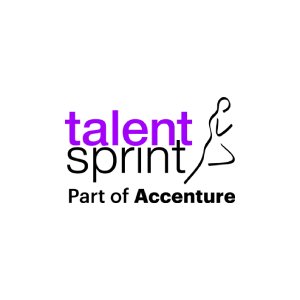The Role of MLOps in Modern ML Lifecycle

In today’s AI-driven world, building a machine learning model is no longer the end goal, rather it’s just the beginning. Once trained, models need to be tested, monitored, retrained, and deployed across real-time systems. That’s where MLOps (Machine Learning Operations) becomes crucial.
Just as DevOps revolutionized software delivery with automation and collaboration, MLOps is now transforming the end-to-end machine learning lifecycle by turning experimental models into robust, scalable, and continuously improving solutions.
What is MLOps?
MLOps (Machine Learning Operations) is a systematic approach to developing, deploying, and maintaining machine learning models in a production environment. MLOps connects model development with production deployment by combining machine learning, DevOps, and data engineering to build strong AI systems.
Core principles of MLOps
Several key principles shape how MLOps works effectively. Collaboration stands at the heart of MLOps, breaking down barriers between data scientists, software engineers, and IT operations teams. The team needs to understand the whole process. MLOps also focuses on continually improving models through constant monitoring and refinement.
Other essential principles include:
- Automation of repetitive tasks like data preparation and model training
- Reproducibility of experiments and deployments for easier debugging
- Versioning of data, models, and code to track changes effectively
- Monitoring and observability to proactively identify and solve problems
- Governance and security to ensure compliance with regulations
- Scalability to adapt to growing data volumes and model complexity
These principles form the foundation of a framework that harnesses the full potential of machine learning applications.
How MLOps supports scalable ML?
MLOps offers crucial infrastructure and processes for organisations looking to scale their machine learning projects. Most work goes into integrating ML solutions with existing IT systems, developing them further, and maintaining them - problems that MLOps solves.
MLOps enables scaling through automation of the entire machine learning lifecycle. This eliminates manual bottlenecks that typically hinder growth. A well-laid-out development process ensures consistency, reproducibility, and governance throughout the ML lifecycle.
The Rise of MLOps in Enterprise AI
AI initiatives now drive business strategy, and MLOps has become a crucial component for enterprise AI. Companies struggle to move past proof-of-concept stages due to manual deployment, limited visibility into model performance, and compliance gaps.
MLOps streamlines model creation to enhance efficiency, accuracy, and market speed, while ensuring scalability and governance. It automates routine work, allowing data scientists and engineers to focus on model development and state-of-the-art solutions instead of day-to-day operations.
Enterprise investment in AI continues to grow. MLOps has evolved into its own distinct approach to managing the ML lifecycle. It covers data gathering, model creation, orchestration, deployment, health monitoring, diagnostics, governance, and business ROI validation.
Stages of the Machine Learning Lifecycle
The machine learning lifecycle presents a well-structured experience, spanning from concept to the real-world implementation of ML models. Data professionals need to understand this lifecycle and its challenges to realise the full potential of machine learning in their organisations.
Overview of ML lifecycle stages
The ML lifecycle comprises six interconnected stages that form a cyclic, iterative process. The original phase begins with identifying business goals to establish clear objectives and success metrics. ML problem framing follows this phase, turning business challenges into specific machine learning tasks with defined performance metrics.
The lifecycle moves to data processing, which includes:
- Data collection from relevant sources
- Data cleaning and preprocessing
- Feature engineering and selection
The model development stage comes next. Teams build, train, tune, and evaluate models through careful experimentation and analysis. This lifecycle works differently from traditional software development. It doesn't follow a strict sequence, but rather uses feedback loops between stages to facilitate continuous improvements.
Challenges in managing ML workflows
Managing machine learning workflows isn’t just about building models, it’s about maintaining them over time.
- One major challenge is data inconsistency, where training data doesn’t match real-world data, leading to poor performance.
- As patterns shift, model drift becomes an issue, necessitating regular updates to maintain accurate predictions.
- Many teams struggle due to a lack of automation, resulting in slow and error-prone deployments.
- Collaboration gaps between data scientists, engineers, and ops teams further delay progress and reduce efficiency.
- Keeping track of versions of data, code, and models becomes complex without the use of structured tools.
- Even after deployment, monitoring models in real time is difficult, which risks undetected failures.
- As the number of models increases, scalability becomes a challenge, necessitating robust MLOps infrastructure.
- For industries with regulations, compliance and auditability are essential, but they can be challenging to implement without proper documentation.
- Finally, high infrastructure costs can drain resources if workflows are not optimized for performance and efficiency.
How MLOps Enhances Each Lifecycle Stage
MLOps practices improve every stage of the machine learning lifecycle. These improvements address specific challenges and create a more efficient and reliable workflow that teams can easily replicate.
Data versioning and lineage tracking
Effective data management lays the foundation for successful machine learning projects. Data versioning lets teams capture dataset iterations in Git-like commits. Teams can easily switch between different data contents. This creates a history of data, code, and machine learning models that everyone can access and utilize.
Data lineage tracks the movement of data from creation to consumption. As one data management expert notes, "Data lineage is the story behind the data" that observes "the entire lifecycle of data such that the pipeline can be upgraded and leveraged for optimal performance." This tracking helps teams upgrade data assets by combining new data with older relevant information.
Automated model training and testing
Pipeline automation in MLOps enables continuous model training. New data triggers retraining automatically. The process includes validation steps for both data and models to maintain quality.
Automated testing serves multiple purposes. It ensures accurate and reliable model predictions, which are crucial in healthcare and finance. The testing also finds and reduces biases. Teams can deploy updated models quickly and safely through continuous integration and delivery practices.
Seamless deployment and rollback
MLOps deployment uses guardrails to prevent downtime during updates while ensuring reliability. Advanced deployment methods include:
- Blue/green deployments: Two similar environments exist, with traffic switching after testing
- Canary releases: Changes go to a small group of users before full deployment
- Automated rollback procedures: Health checks trigger rollbacks when metrics drop below thresholds
These strategies minimise disruption and protect system integrity. Teams can "roll back to the previous model version if your new model performance is lower than your current model performance" without interrupting service.
Monitoring and alerting for model performance
Continuous monitoring completes the MLOps enhancement cycle. Model monitoring displays performance signals and alerts teams to potential issues before they impact business operations.
MLOps monitoring acts as "the first line of defence that helps identify when something goes wrong with the production ML model." Teams can identify root causes and resolve issues efficiently.
Benefits of MLOps in Modern ML Lifecycle
MLOps practices bring major advantages throughout the machine learning lifecycle and create waves of improvements across organisations. These benefits extend far beyond technical upgrades to deliver genuine business value.
Faster experimentation and iteration
MLOps speeds up the experimental phase of machine learning development. Automated repetitive tasks help organisations significantly reduce model development timelines. Projects that took months now finish in weeks. This speed boost comes from running tasks in parallel.
Companies using MLOps report they launch new use cases one to two months earlier. This advantage lets teams test more ideas, check different features, and explore other model designs without longer project timelines.
Improved collaboration across teams
MLOps creates common ground that connects previously isolated departments. Teams share a common language that cuts down compatibility issues and speeds up model creation and deployment.
MLOps breaks down walls between data scientists, engineers, and operations teams. Knowledge flows better, new team members learn faster, and people focus on important work instead of routine tasks.
Better model accuracy and reliability
Regular monitoring and automated testing are the foundations of improved model performance. Systematic evaluation processes help detect and alleviate biases that could affect model fairness and accuracy.
Automated ML workflows help teams achieve consistent and repeatable development, testing, and deployment processes. This standardisation reduces human error while providing more accurate analytical insights.
Compliance with data and AI regulations
Modern regulatory requirements make compliance essential. MLOps governance frameworks track and document all ML artefacts to support audit needs in regulated industries.
Building governance policies into MLOps pipelines enables the creation of responsible, secure, and ethical AI systems.
Preparing for the Future of MLOps
The MLOps landscape is evolving at an unprecedented rate. State-of-the-art approaches drive new ways to handle the machine learning lifecycle. Several key developments will reshape how organisations implement and maintain machine learning solutions.
Emerging tools and platforms
MLOps platforms continue to push boundaries with automation. End-to-end MLOps platforms are becoming popular. These platforms offer detailed solutions that streamline the entire ML workflow. Users gain access to everything, from data management to experimentation, deployment, monitoring, and governance, all in one place.
Trends in responsible AI and governance
We need responsible governance as AI adoption continues to grow. Organisations now focus more on model explainability and ethical AI practices.
Many companies go beyond basic regulations with their self-governance approaches. They blend organisational controls with automated technical safeguards. This includes automation in AI red teaming, metadata identification, logging, and alerts.
Building a culture of continuous improvement
Teams with effective continuous improvement have open communication channels. Feedback flows naturally. Organisations can harness collective intelligence by creating frameworks that facilitate team collaboration and cross-departmental work.
Conclusion
In the fast-paced world of machine learning, building a powerful model is only half the story because the real challenge lies in scaling, monitoring, and maintaining it in production. This is where a PG-level advanced certification programme in AI and MLOps doesn't just teach you to build models. It teaches you to build ecosystems. Because MLOps plays the role of the unsung hero of the modern ML lifecycle, acting as the bridge between innovation and execution. It transforms chaos into coordination, experimentation into enterprise-grade performance.
But, Data science is the architect, and MLOps is the construction crew that builds and maintains the house, and the IIT Madras Data Science and Machine Learning course offers an excellent pathway to nurture core competencies to curate the world of the machine learning lifecycle along with MLOps.
So to conclude this, Data science and deep learning uncover patterns. MLOps ensures those patterns are put to use. It's the operational backbone that supports the modern AI pipeline from start to finish.
Frequently Asked Questions
Q1. What is the MLOps machine learning life cycle?
The MLOps machine learning lifecycle includes data collection, preprocessing, model development, validation, deployment, monitoring, and continuous improvement. It ensures reliable, scalable, and automated ML workflows, enabling faster and more consistent delivery of models into production environments.
Q2. Why is MLOps important for machine learning models?
MLOps is crucial for managing machine learning models at scale. It automates deployment, ensures reproducibility, handles version control, monitors model performance, and streamlines collaboration between data science and operations teams, enabling faster, more reliable, and efficient ML model lifecycle management.
Q3. What are the objectives of MLOps?
The objectives of MLOps are to streamline model development, automate deployment, ensure reproducibility, enable continuous monitoring, and maintain high model performance, while fostering collaboration between data science and engineering teams for scalable and reliable machine learning workflows.

TalentSprint
TalentSprint is a leading deep-tech education company. It partners with esteemed academic institutions and global corporations to offer advanced learning programs in deep-tech, management, and emerging technologies. Known for its high-impact programs co-created with think tanks and experts, TalentSprint blends academic expertise with practical industry experience.



